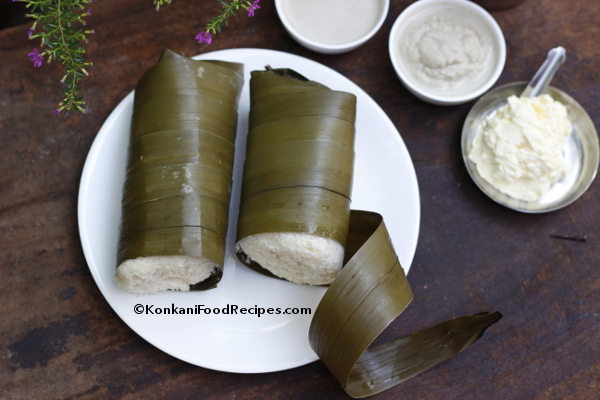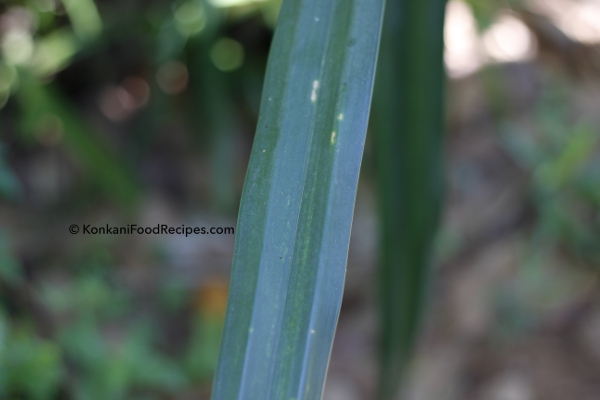Here are some of the specific health benefits of those maestro mint leaves...
1. Mint Leaves Help Treat Gastrointestinal Disorders
Much
of the existing research on the therapeutic properties of mint suggests
that the herb may be particularly effective in treating
gastrointestinal disorders, including:
Irritable Bowel Syndrome
– The use of peppermint oil in enteric-coated capsules has been found
to be a safe and effective treatment for those suffering from abdominal
pain and discomfort caused by Irritable Bowel Syndrome (
10), (
11).
One study conducted in 2007 showed that an impressive 75 percent of
subjects who consumed peppermint oil saw a greater than 50 percent
reduction in their IBS symptoms score, compared to those who took a mere
placebo (
12).
In fact, peppermint oil "may be the drug of first choice in IBS
patients with non-serious constipation or diarrhea to alleviate general
symptoms and to improve quality of life" (
13).
The beneficial effect also extends to kids. In one children's trial,
approximately 75% of those taking peppermint oil experienced reduced
IBS-associated pain within 2 weeks (
14).
Functional dyspepsia –
A study performed in 2000 found that when subjects suffering from
dyspepsia took a daily infusion of peppermint and caraway seed oil, 67
percent of them reported a significant improvement in their symptoms (
15).
Gastric ulcers –
In certain animal studies, it has been demonstrated that menthol helps
to protect the lining of the stomach against the harmful effects of
ethanol and indomethacin, making it a useful means of preventing the
formation of gastric ulcers associated with prolonged use of painkillers
and alcohol (
16).
Gastric Emptying Disorders –
humble peppermint has also been shown to facilitate gastric emptying,
indicating its usefulness for patients that have various
gastrointestinal disorders (
17).
Colonic spasm –
Other scientific studies suggest peppermint oil may be a safe and
effective alternative to the drug Buscopan given its capacity to reduce
colonic spasms in barium enemas (
18), (
19).
Infantile Colic –
Another study done in 2013 discovered peppermint is just as if not more
effective at treating infantile colic as the synthetic chemical with
which it is usually treated, simethicone (
20).
Bottom
Line: Mint leaves have the potential to treat a number of
gastrointestinal disorders, including Irritable Bowel Syndrome,
functional dyspepsia, gastric ulcers, gastric emptying disorders,
colonic spasm, and infantile colic.
2. Mint Leaves Aid Digestion
In
addition to ameliorating the effects of gastrointestinal disorders,
marvellous mint also promotes orderly digestion, and soothes stomach
muscles beset by indigestion and inflammation. Mint is a soothing herb
that has been used through the millennia to assist with indigestion and
upset tummies (Michael T. Murray and Joseph E. Pizzorno, authors of "The
Encyclopedia of Healing Foods").
Did you know the aroma of mint
by itself helps to activate the salivary glands along with the glands
that excrete digestive enzymes, thus promoting smooth and proper
digestion of food? (
21) This is precisely why mint has for long been used in appetizers and as an ingredient in palate cleansers.
What’s
more, peppermint apparently increases bile secretion and makes bile
flow more efficiently - and may also promote healthier cholesterol
levels (
22). Mint in addition is a good relaxant, and the muscles in your digestive tract are one of the things it relaxes (
23). Each of these factors help to speed up and ease the digestive process.
Meanwhile,
for sufferers of indigestion, a calming cup of peppermint tea after
meals may be just what your sick stomach needs to feel better (
24).
Mint contains menthol and methyl salicylate which both ease stomach
spasms, and help your gut to settle down. Peppermint further functions
as a carminative, which means it helps to relieve discomfort and pain
from gas and bloating. Peppermint tea is a traditional home remedy for
flatulence! (
25)
Bottom
Line: Consuming mint leaves prevents indigestion and keeps your
gastrointestinal tract in good shape. It also prevents wind!
3. Mint Leaves Relieve Nausea
The
menthol oil derived from freshly crushed mint leaves can also help
soothe nausea and motion sickness (that makes it a very useful thing to
take onboard flights!). Again, the mere aroma is often enough to ease
your symptoms (
26).
One study from 2013 showed peppermint oil achieved good results in
alleviating chemotherapy-induced nausea, and what’s more at a much
cheaper price compared to standard pharmaceutical-based treatments (
27).
Were you aware that lots of people keep mint-containing products or
menthol oil on their person at all times precisely to ward off feelings
of nausea should they arise?
Bottom Line: The menthol in mint
helps dispel the unwelcome sensation of nausea. Peppermint oil helps
relieve chemotherapy-induced nausea.
4. Mint Leaves Provide You With Pain Relief From Headaches
In
addition to relieving nausea, mint leaves double up as a natural
alternative to aspirin in the event of headaches. For example, it is
known that when mint oil, or balms whose base is comprised of mint, are
rubbed topically on the nose and forehead, they give rapid relief from
headaches and migraines (
28). Whereas brazilian mint (scientific name
Hyptis crenata)
has been scientifically demonstrated to be just as effective at
providing pain relief as synthetic aspirin-style drugs when consumed as a
"tea" (
31).
Magical mint is an inherently soothing substance, and so naturally it
helps to ameliorate the symptoms of inflammation and fever that
frequently accompany these conditions (
29). In fact, applying peppermint extract externally has been found to increase the pain threshold in humans (
30).
Bottom
Line: Mint, whether applied topically or ingested as a tea, provides
you with much needed (and all-natural) relief from pain caused by
headaches and migraines.
5. Mint Leaves Help Soothe Irritated Skin
Because
of its soothing properties, applying mint topically can also be an
effective treatment for skin irritations and itchiness, such as those
caused by rashes, reactions, and the like (
32).
Next time you have an unwelcome run-in with some poison ivy, try
applying a wet rag soaked in peppermint tea, some cold mint tea bags, or
a mixture of water and peppermint essential oil. The anti-pruritic
properties of mint oil also come in handy in treating bites from insects
including mosquitoes, honeybees, hornets, wasps, and gnats (
34).
Mint
oil is a natural antiseptic, which makes it useful for healing skin
infections caused by cuts and insect bites. The cooling properties of
mild mint will provide you with relief from the sensations of itchiness
and irritation, at the same time as its anti-inflammatory attributes
bring the swelling down.
Suffer from shingles? A study conducted
back in 2002 found that applying peppermint oil topically to shingles
resulted in a rapid improvement in patients' shingles-associated
neuropathic pain symptoms; what is more, the effects lasted throughout
the entire 2 months of follow-up treatment (
33).
Finally,
mint juice is also an effective skin cleanser. In addition to helping
to eradicate pimples, it can also assist those with acne (
34). In the same vein, mint juice can also be applied to heal and soothe burns (
36).
Bottom
Line: Mint leaves help soothe skin irritated and inflamed by rashes,
reactions, burns and insect bites. Mint is a good anti-septic. Studies
have found it is effective in reducing pain caused by shingles. Mint
leaves can also help reduce pimples and acne.
6. Mint Leaves Make An Excellent All-Natural Insect Repellant
One
study on natural insect repellants discovered that applying Australian
bush mint essential oil to the arms gave great results, preventing
mosquitoes both from landing on the skin and from biting it (
37).
If you don't have a bottle of the essential oil, you can rub the leaves
directly on the skin (though it probably won't be as effective). In
fact, mint oil is already found frequently in insect repellent devices
such as citronella candles, as the smell alone is sufficient to ward off
the majority of insects (
35).
Bottom Line: Mint leaves can be used to make an all-natural, eco-friendly insect repellent.
7. Mint Leaves Promote Healthy Hair
A
2014 study showed that topically applying peppermint essential oil to
the scalp positively affected the growth of new hair follicles (
38).
That's great news for those of you concerned about thinning hair or
pattern baldness! Consider trying out an organic hair serum with mint
and rosemary (
39).
Bottom Line: Applying mint leaves topically promotes healthy hair growth and prevents hair thinning and baldness.
8. Mint Leaves Promote Weight Loss
Yet
another surprising health benefit of mighty mint, is that it can help
you in your attempts to shed those burdensome kilos! Not only is it low
in calories but, as we have seen, mint is a natural stimulant, and it
dutifully stimulates those digestive enzymes that absorb nutrients from
food into the bloodstream, and catabolize fat into energy that can be
used by your body (
40).
The more mint leaves you eat, in other words, the more of your fat gets
consumed and converted into fuel, instead of being stored as KGs in
your body!
Bottom Line: Eating mint leaves will get you looking trim, taut and terrific!
9. Mint Leaves Improve Your Eyesight
Spearmint
and peppermint leaves both contain generous quantities of vitamin C and
vitamin A, which are known to contribute to improved vision (
41),
These elements also protect our delicate orbs from damage caused by
roaming free radicals, which in turn prevents the occurrence of eye
diseases like cataracts and macular degeneration (
42).
Mint is rich in vitamin A, especially: a half-cup of peppermint leaves
provides 23 percent of the daily vitamin A requirement for men, and 18
percent for women; meanwhile, the same amount of spearmint leaves
contains 62 percent of the male and 79 percent of the female requirement
(
43).
Bottom Line: mint leaves promote better vision, whilst preventing cataracts and macular degeneration.
10. Mint Leaves Have Anti-Cancer Properties
Here
is another startling health benefit of this remarkable little herb: it
prevents cancer! As we have seen, mint contains anti-oxidants, and
science has repeatedly shown a connection between a diet rich fresh
fruits and vegetables - which are packed full of antioxidants like
vitamin C - and reduced likelihood of contracting various cancers (
44).
In particular, mint may have a special role to play in preventing
prostate
cancer. Preclinical research shows that peppermint contains a compound
called menthol which apparently slows and inhibits the growth of
prostate cancer (
45), (
46).
Peppermint
also contains a phytonutrient called monoterpene, which has been shown
to stop the growth of pancreatic, liver and breast cancers in animal
studies (human research awaits!). In addition, peppermint has a compound
known as perillyl alcohol, which may halt the development and spread of
cancer (Michael T. Murray and Joseph E. Pizzorno, authors of "The
Encyclopedia of Healing Foods"). Yet other enzymes found in mint may
also help prevent and treat cancer (
47).
Bottom
Line: Mint leaves contain antioxidants and other compounds which may
inhibit the growth of cancers. One study suggests the menthol in
peppermint may retard the spread of prostate cancer.
11. Mint Leaves Are An Effective Anti-Allergen
Each year, legions of people worldwide are afflicted by allergies such as hay fever (scientific name
rhinitis)
during certain months. In a 2001 preclinical study on rats, mint leaf
extracts were found to have inhibited release of the chemical histamine,
which is known to exacerbate symptoms of allergic rhinitis and other
seasonal allergies (
48).
Mint also contains an anti-inflammatory agent called rosmarinic acid
which has been shown to be effective in relieving symptoms of seasonal
allergy symptoms (
49).
Bottom Line: Mint leaves have been shown to be effective in addressing seasonal allergies like hay fever.
12. Mint Leaves Are Good For Your Respiratory System
Mint
contains menthol, an excellent natural decongestant. Again it’s
actually the aroma of the herb that’s responsible for breaking up phlegm
and mucus in the lungs, bronchi, nose and throat, clearing up
congestion and giving you relief from respiratory disorders associated
with common cold and asthma (
50).
For example, a 2009 study found that inhaled essential oil of
peppermint was able to alleviate inflammation resulting from
tuberculous, with the authors of the study concluding: "This procedure
may be used to prevent recurrences and exacerbation of pulmonary
tuberculosis" (
51).
Mint
is also a good relaxant, and has a cooling effect which can help soothe
sore throats, noses and other respiratory airways, and relieve the
irritation associated with chronic coughing (
52).
Actually, it is for this reason that many balms contain mint - and why
they tend to have greater effectiveness (and are more eco-friendly!)
than aerosol-based inhalers.
Bottom Line: Mint is a natural
decongestant, relaxant and coolant, and thus helps soothe the symptoms
of respiratory disorders like common cold and asthma. One study also
found it may be effective in treating tuberculosis.
13. Mint Leaves Improve Your Memory
Here's yet another example of how the mere
smell
of mint can improve your health! A study from 2006 reports that
aromatherapy using peppermint leaves enhances the memory and increases
alertness (
53), (
54).
You can try this yourself at home: simply add a few drops of peppermint
essential oil to your next bath. Or: boil up some shredded mint leaves
in water and let the scent waft throughout your home. Even if it doesn't
improve your memory, it will still leave the house smelling clean and
refreshed!
Another recent study exploring the link between mint
and cognitive function, discovered that those who regularly ate
mint-flavored chewing gum, had significantly improved memory and
alertness compared to those who did not (
55).
For the students among you, you’ve now actually got a good reason for
bringing that stick of chewing gum with you into the classroom every
lesson!
Bottom Line: The stimulating properties of mint leaves
extend to stimulating your brain, leading to enhanced memory, alertness
and cognitive function.
14. Mint Leaves Help You Fight Depression and Fatigue
As
we have seen, mint is an excellent natural stimulant; the smell by
itself can be sufficient to recharge the batteries and dust the cobwebs
out of your brain (
56).
If you've been feeling depressed, anxious, or tired lately, then
consuming some mint or its derivative oils might be just what the doctor
ordered! (
57)
It can either be ingested, applied topically, or the vapor inhaled -
all of those techniques can give you a quick and welcome energy boost!
Or you can put a drop or two of menthol oil upon your pillow before
going to bed, and let the mint work its magic upon your brain and body
as you sleep (
58).
Bottom Line: In the same vein as No. 13, mint leaves can help perk you up when you’re feeling tired and depressed.
15. Mint Leaves Improve The Functioning Of Your Nervous System
Adding
copper to your diet helps you make phospholipids - a certain fat needed
for healthy nerve function - and improves overall brain cell
communication. And guess what? Spearmint leaves are also a good source
of copper. A half-cup serving offers 12 percent of the daily copper
needs for men and women (
59).
Bottom Line: The copper in spearmint leaves helps improve the overall functioning of your nervous system.
16. Mint Leaves Help Support Your Immune System
As
we have seen, mint contains vitamin A, one of the perks of which, so
far as your body is concerned, is that it stimulates the creation and
improves the functioning of white blood cells, the foundation of your
immune system (
60).
One recent study found that consuming peppermint helped to inhibit the
activity of acyclovir-resistant Herpes Simplex virus type 1 (
61), (
62).
Bottom Line: Mint leaves are also good for your immune system.
17. Mint Leaves Strengthen Your Bones
Spearmint
is also a rich source of manganese, which helps your body synthesize
certain proteins required for the healing of wounds, and also helps your
bones maintain their proper strength. A half-cup serving of spearmint
leaves provides 28 percent and 22 percent of the daily manganese
requirements for women and men, respectively (
63).
Bottom Line: The manganese in spearmint leaves helps keep your bones strong.
18. Mint Leaves Promote Good Oral Health
This
is a long-known health benefit of magical mint. Because mint is a
natural anti-microbial agent and breath freshener, it aids oral health
and hygiene by preventing the growth of harmful bacteria inside the
mouth (which makes your breath smell better!), whilst cleaning your
tongue and whitening the teeth. In fact, this is the reason why people
in the Middle Ages would rub mint leaves onto their gums and teeth! In
the modern age, and for similar reasons, mint is a commonly-found
element in toothpastes, flosses, mouthwashes, and the like. In fact,
concentrated peppermint oil extract has been found to be superior to the
mouthwash chemical chlorhexidine, in killing the germs that cause bad
breath, along with the streptococcus driven biofilm that are associated
with dental cavities (
64), (
65).
Bottom Line: Mint promotes good oral health, by killing off the bacteria that cause bad breath and dental cavities.
19. Mint Leaves Prevent Cell Damage Caused by Radiation
Preclinical studies indicate that peppermint protects you against radiation-induced DNA damage and cell death (
66), (
67). Good news for those of you who work in or around radiology and imaging, or the nuclear industry!
Bottom Line: consuming mint leaves prevents cell and DNA damage associated with exposure to radiation.
20. Mint Leaves Help To Halt Hiccups
Drinking a glass of mint water is an old-fashioned (but effective!) home remedy for curing hiccups (
68).
Simply infuse a few sprigs of mint in a glass of water and drink up.
Alternatively, you can try chewing on the leaves themselves. The reason
mint helps suppress those hiccups is because of the menthol in it, which
is thought to be effective in easing the muscle spasms in your
digestive tract (
69).
Bottom Line: Eating or drinking mint helps cure the hiccups.
21. Mint Leaves Prevent Breastfeeding Associated Nipple Pain and Damage
Here's
one for the ladies. Despite the sublime phenomenon of a mother
breastfeeding her newborn child, an unpleasant byproduct experienced by
many women is pain and damage (cracks) to their nipples. A study
published in 2007 found that drinking peppermint water may be effective
in preventing nipple cracks and pain in first-time mothers who are
breastfeeding (
70).
Bottom Line: Mint leaves may save breastfeeding mothers from the painful, cracked nipples often associated with breastfeeding.
22. Mint Leaves Prevent Anemia
As
we've seen already, spearmint supplies your body with quite a few
essential nutrients: two more to add to the list are iron and folate.
Both of these are required for the formation of healthy red blood cells,
so that a surfeit of either results in anemia. A half-cup serving of
spearmint leaves contains contains 30 percent and 68 percent of the
recommended daily intake of iron for women and men, respectively, along
with 12 percent of our daily folate needs (
71).
This is another good reason for pregnant women to get some mint into
their diet, as anemia is extremely common among expectant mothers, with
negative effects for both parent and child.
Bottom Line: the iron and folate in spearmint contributes to the formation of healthy red blood cells.
23. Mint Leaves May Reverse Female Sterility
Some
research indicates that mint may be used to successfully treat
sterility in females. Spearmint has been found to have significant
antiandrogenic effects in subjects suffering polycystic ovarian syndrome
(
72), whilst
also ameliorating the related condition of mild hirsutism, marked by
excessive hair growth in females, and which is also associated with
female sterility (
73).
But suffice to say, a great deal of further research must be done on
the effects of mint on female sterility. In fact, some argue that due to
the insecticidal and germicidal qualities of the herb, prolonged use
may in fact facilitate female sterility, killing off a woman’s ova and
lessening the chances of conception.
Bottom Line: Mint leaves may prevent conditions associated with female sterility, though more research is needed.
Make Mint A Part of Your Meals ...
There
are obviously loads of ways you can reap the health benefits of this
tantalising little herb, in fact you've probably tried a few already -
whether it’s a comforting cup of herbal tea, or a hearty chicken salad
spiced up with some chopped mint leaves. You can add mint leaves to
home-brewed iced tea and lemonade, or work it into your next fruit
salad. Whatever you do, remember that mint is a tender herb, with the
leaves best used raw or added right at the end of cooking so as to
preserve their delicate flavor and texture. When buying mint, also look
for bright, unbruised leaves. Store it in plastic wrap in the
refrigerator for up to a week at a time.
Here are some delicious
recipes that incorporate mint, which allow you to get all the
aforementioned health benefits while at the same time enjoying a variety
of lip-smacking drinks, snacks and meals...
1. Limeade with Mint
This
invigorating (though non-alcoholic!) concoction makes a perfect
beverage for a hot summer's day. The inclusion of mint adds a delicate
though refreshing flavour to a decidedly tangy drink. All you need to do
is combine lime juice with water and lime zest, then garnish with
several sprigs of fresh mint, and presto! you’re done. Make sure to
include the lime zest for extra tanginess. Here's how to get the best
results: make a simple syrup from sugar, water and grated lime zest,
bringing to the boil in a small saucepan until all the sugar is
dissolved. Strain out the lime zest using a sieve. Serve chilled.
2. Green Mojito (& Mint) Smoothie
Smoothies
share with mint the trait of versatility: you can drink them at
breakfast to help get the day off on the right foot, or they are just as
welcome throughout the day, whether as a mid-afternoon pick-me-up, or
as part of your post-workout recovery drink. A lot of modern blenders
come with to-go cups, so you can toss your pre-blended smoothies into
your bag as you head out the door in the morning.
This recipe
combines both. Blend coconut water, mint, pineapple, lime, avocado and
robust kale and you're done. Add in some grated ginger to give it some
extra 'zing'. Chock full of nutrients from the mint, kale and avocado,
this POWER drink aptly has a brilliant green colour. The Green Mojito
and Mint Smoothie is another one best served chilled; if you want to
drink immediately throw in some ice cubes before blending.
3. Cucumber Salad With Mint and Feta
This
cucumber salad with mint and feta
makes a perfect side dish, or a refreshing mid-afternoon snack on a
warm day. Spicy, refreshing mint enhances the cooling effect of fresh
cucumber. Simply toss sliced cucumbers together with radishes, red onion
and mint leaves. Sprinkle with a simple dressing made from vinegar,
salt, pepper, and olive oil; then right before serving add feta cheese,
crumbled.
4. Greek Lamb Kebabs with Yoghurt and Lemon Mint Sauce
Get a double dose of mint magic by making your salad the entree to this dish of
lamb kebabs.
Dunk pieces of lamb in your very own, homemade marinade of olive oil,
garlic and red wine vinegar. Once marinated, thread onto rosemary sprigs
and grill on the barbeque. Serve with the equally delicious sauce made
from Greek yoghurt, lemon juice, mint, parsley, oregano, garlic, capers
and anchovy also mentioned in the recipe. Bon appetit!
5. Basil Mint Pesto
This
mint pesto recipe
is easy to make and goes well as a topping with any number of savory
dishes - chicken, pasta, you name it. Blend toasted walnuts with mint
leaves, basil, sunflower seeds, lemon juice and garlic. Use it straight
away or refrigerate in airtight containers for later. Make extra large
batches and you'll have enough pesto for months to come! Its yet another
way to make mint a regular part of your diet, thereby reaping those
many mint health benefits.
6. Mint Julep
This is another recipe for a minty drink, this one for those of you who like your grog! This
mint julep
makes for a feisty shot to enjoy with friends at your next cocktail
party. Prepare an infusion of mint, dissolved caster sugar and water,
then stir through Gentleman Jack whiskey. Serve chilled or topped with
ice. You can actually save some of the mint and use it to make minted
ice cubes, too. Toss them in a punch bowl and top with the whiskey
concoction; garnish with lemon wedges, and serve.
7. Mint Chocolate Chip Ice Cream
Here's some good news! There are many ways you can make mint a part of your desserts as well.
This is one such recipe.
This homemade mint chocolate chip ice cream leaves the store-bought
varieties for dead! Whisk together milk, cream, eggs, vanilla, dissolved
sugar and salt; add freshly bruised mint leaves and let them infuse the
mixture. Strain out the mint, and whisk and cook the mixture again,
until it forms a custard. Freeze in an ice cream maker, adding in dark
chocolate (chopped into chunks and flakes) while you’re at it. Freeze
again before serving. You’ll find that this ice-cream has a much more
delicate, fragrant flavor than the ultra-sweet variety you buy in the
store.
8. After Dinner Chocolate Mints
You chocoholics will be in heaven with
these
after dinner chocolate mints! They make a simple yet oh so delicious
dessert option. Plus they allow you to get some healthy mint in your
diet AND contain far less sugar than most after dinner mint morsels.
Simply take some fresh mint leaves and run them through a dish of melted
chocolate until both sides are covered. Place on baking paper, or in
the refrigerator, and allow them to set.
9. Fresh Fruit With Mint Salad
Mint plays well with fruit too. Bring a touch of the tropics into your kitchen today with
this fruit and mint salad recipe.
Chop your trusty mint leaves into tiny pieces and toss together with
sliced mangos, kiwis, oranges, strawberries and a banana for good
measure. Stir through honey and the citrus juice from the oranges. Add
mixed berries, and serve with cream. This dish gives you another dessert
option incorporating mint; but you can also have it as a refreshing
snack throughout the day. Make sure to invite your friends over to
share: to get them through the door, photograph and put it on Snapchat,
as this dish is a feast for the eyes alone!
10. Mint Tea
This
ultra-refreshing mint tea
makes a comforting, herbal drink for the evenings. Simply infuse
boiling water with tea, mint leaves and sugar. Strain, and serve with
mint sprigs.
11. Chocolate Mint Brownie Sauce
To round things out, we've got yet
another chocolatey treat
for those of you whose sweet tooth is insatiable: luscious homemade
brownies topped with an equally homemade mint brownie sauce. For the
brownies, beat together butter, eggs, caster sugar, chocolate sauce,
vanilla, flour, and chocolate mixture. Spread the mixture into a pan and
bake in the oven. Meanwhile, mix together the mint layer from icing
sugar, melted butter and creme de menthe liqueur. Spread over the cooled
brownies, then top with a layer of mixture of chocolate blended with
melted butter. Enjoy!
Summary
Marvellous mint is a
truly versatile little herb. In addition to its many other uses - as a
flavoring agent, in cosmetics, medicines, inhalers and breath fresheners
- the leaves also provide many fantastic health benefits, ranging from
curing indigestion to preventing cancer. And with its invigorating,
spicy taste and aromatic fragrance, it will make a friendly presence in
your kitchen too. It's super easy to grow in your own garden (or even in
small pots on the windowsill), so head down to your local nursery and
collect some seeds or seedlings; pick out a few different varieties and
see which ones you like the most. Be warned though: mint grows very
rapidly, so you could well end up with more than you know what to do
with!
Making mint a part of your diet lets you improve your health
and at the same time adds some extra zing to your drinks, desserts and
meals. Once you've had that first mouthful of mint, you'll wonder how
you ever lived without it!
 FROM AN AMERICAN RESTAURANT HERE IN INDIA ;AND SORRY I COULD NOT EAT NOT EVEN ONE ITEM AS ALL ARE MADE /OR MIXED WITH /MAYONNAISE Is mayonnaise bad for?
FROM AN AMERICAN RESTAURANT HERE IN INDIA ;AND SORRY I COULD NOT EAT NOT EVEN ONE ITEM AS ALL ARE MADE /OR MIXED WITH /MAYONNAISE Is mayonnaise bad for? with chocolate/or ice cream as per demand
with chocolate/or ice cream as per demand
 In the beautiful land of Udupi, Mangalore, plain idlis are made special and fragrant by steaming idli batter in
In the beautiful land of Udupi, Mangalore, plain idlis are made special and fragrant by steaming idli batter in 


































